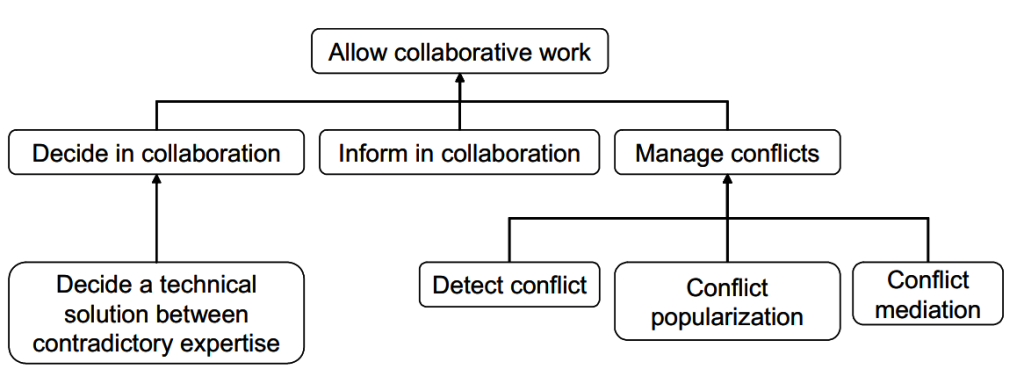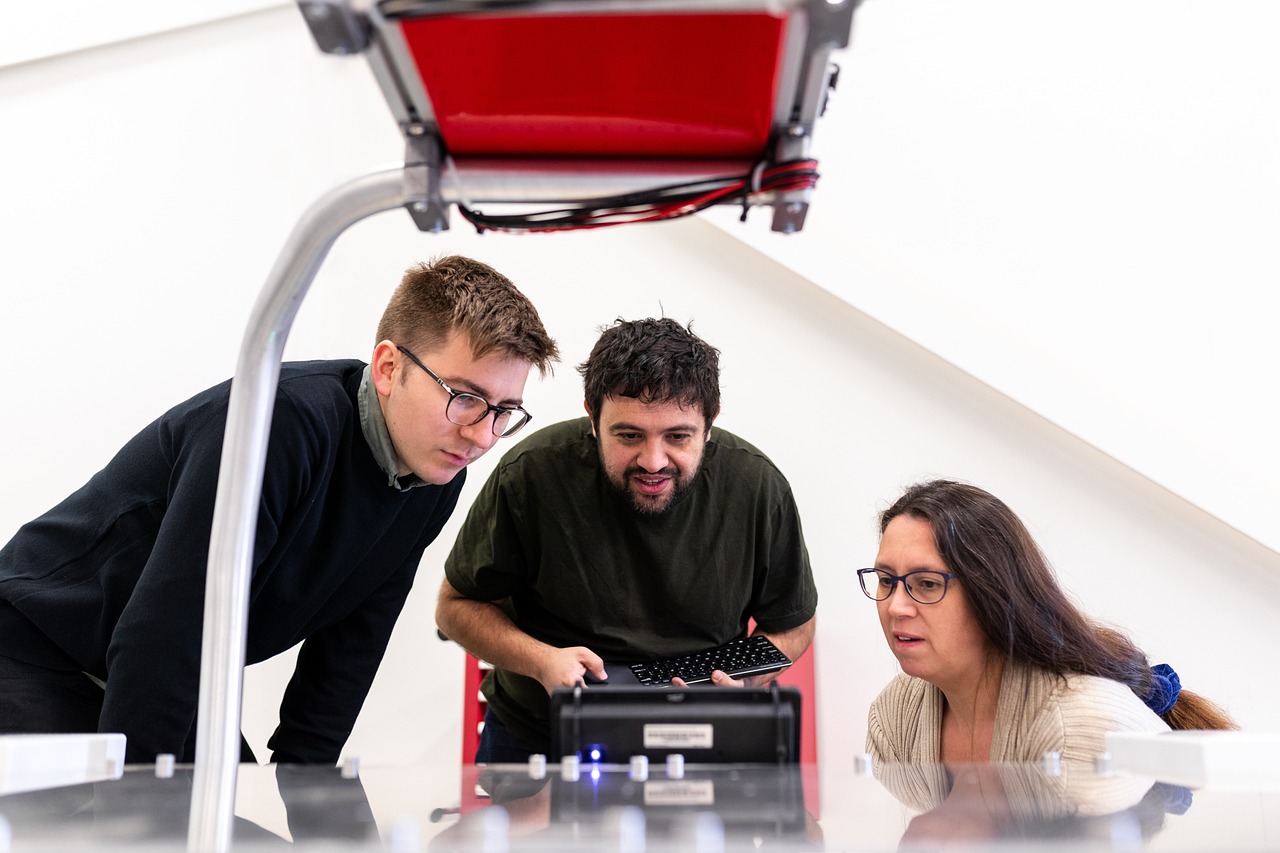Cross-Functional Collaboration in Product Development has become increasingly vital as development cycles shorten and competitive pressures intensify. Simultaneously, both products and production systems are growing more complex. This convergence of factors demands innovative organizational models capable of meeting evolving market expectations. As a result, stakeholders involved in design – each contributing distinct expertise and cultural perspectives – are now expected to collaborate more closely to ensure successful product outcomes. Collaborative design thus unites professionals around a shared objective: to develop products through active interaction, knowledge exchange, and coordinated execution of multifaceted tasks.

Figure 1. Typology of collaborative work. Source: https://hal.science/hal-00163184v1/file/VRobin.pdf
Complexity, Innovation, and the Need for Integrated Design
Today’s design processes face heightened constraints related to cost, time, and quality. Designers are increasingly distributed across expansive enterprise networks, while technologies continue to converge and interconnect. In this context, design management must become more agile and responsive to external influences. To effectively steer collaborative design efforts, it is crucial to understand the environments in which these processes unfold – enabling timely adjustments that better support participants, particularly within the framework of Cross-Functional Collaboration in Product Development.
Innovation, by nature, is a collective endeavor. Designers across disciplines recognize the importance of working alongside complementary specialists. Consider a furniture designer collaborating with a textile expert, or a thermodynamics engineer partnering with a turbine-blade specialist – these synergies exemplify how industries strive to create offerings that resonate with customers. The key difference lies in decision-making: furniture choices often hinge on intuition, while selecting a jet engine demands rigorous analysis of quantitative performance metrics.
Accordingly, the true challenge of collaborative innovation emerges in sectors like automotive, where consumer choices blend emotional appeal with rational performance evaluation. The stakes are high – if a prominent figure such as Jeremy Clarkson critiques the tactile experience or perceived personality of a new model, billions in engineering and manufacturing investments can be put at risk.
Modern Product Teams and Their Cross-Functional Dynamics
Given the complexity of contemporary product development, organizations face mounting pressure. No single individual holds the comprehensive knowledge required to manage the entire product lifecycle. Success hinges on the integration of marketing, design, and manufacturing expertise, requiring sophisticated coordination of resources. Traditional sequential development models are increasingly replaced by parallel approaches. Supporting this shift, Takeuchi and Nonaka’s 1986 “rugby” model – where the “ball” is continuously passed among team members – remains highly relevant. As a result, Cross-Functional Collaboration in Product Development has become a hallmark of modern product creation.
Typically, each team comprises a Product Manager (PM), Design Lead (DL), and Tech Lead (TL), representing the core dimensions of business value, user experience, and technical feasibility.
Examples of joint activities that foster shared understanding include:
- Engineers participating in customer calls and usability testing
- Engineers contributing to design workshops and early ideation sessions
- Designers engaging in sprint planning
- PMs attending architecture reviews
- Collective analysis of customer insights and product roadmaps
- Shared retrospectives to refine collaboration practices
- Joint evaluation of released features, adoption metrics, and potential enhancements
Looking ahead, collaboration with design teams remains essential. Designers and PMs share a common goal: to create products that are both functional and delightful for users. Their collaboration spans:
- Understanding user experience (UX)
- Defining product features
- Iterating based on feedback.
Similarly, collaboration with engineering teams is critical. Once designs are finalized, engineers bring them to life. PMs play a key role in this transition by ensuring clarity, technical alignment, and prioritization.
Equally important is collaboration with marketing teams. Building the product is only part of the equation – ensuring market visibility is just as crucial. Aligning product strategy with communication strategy is especially important within the context of Cross-Functional Collaboration in Product Development.
Leadership Challenges, Conflicts, and Best Practices
Despite its advantages, cross-functional leadership presents significant challenges. Effective leadership across functions is essential for achieving meaningful product impact, particularly in fast-paced environments where diverse teams must coordinate seamlessly.
In this setting, synergy becomes a central goal – where the collective output surpasses the sum of individual contributions. When team diversity is harnessed effectively, complementary skill sets drive exceptional performance. However, achieving this synergy requires intentional leadership, strategic clarity, and structured collaboration across functional boundaries.
Thus, cross-functional collaboration also introduces inherent challenges. Differences in terminology, priorities, and workflows can lead to communication barriers or conflicting perspectives. These tensions must be managed proactively to sustain progress.
Conflict is another inevitable aspect. Diverse teams often face disagreements, especially when navigating difficult trade-offs involving features, timelines, or resources. Leaders must be adept at conflict resolution to maintain momentum and prevent disputes from derailing development.
To overcome these challenges, several best practices can be applied to strengthen Cross-Functional Collaboration in Product Development:
- Clear and consistent communication
- Alignment of goals across teams
- Empathy and active listening
- Effective conflict resolution strategies
- Leveraging individual and team strengths
When these practices are embraced, collaboration yields powerful benefits: richer idea generation, stronger alignment, accelerated processes, and more effective cross-functional leadership.
Contact us today to learn how LA NPDT can assist in realizing your project.
Collaboration Models, Tools, and Final Considerations
- Collaboration, at its core, is a constructive process where multiple parties explore differing viewpoints to co-create solutions that exceed individual limitations. Team collaboration remains the most traditional and effective form of cooperation, built on shared awareness and coordinated effort.
- Cross-functional collaboration, by contrast, unites departments in pursuit of shared organizational goals. Organizations that excel in this area tend to outperform in innovation and industry transformation.
- Cloud collaboration has further revolutionized teamwork, allowing teams to upload, access, and refine work entirely online. Virtual collaboration has expanded rapidly, offering new avenues for engaging distributed teams.
- Technological tools play a vital role in supporting these efforts. Product Data Management (PDM) systems facilitate essential tasks such as configuration control, version tracking, and project coordination.



